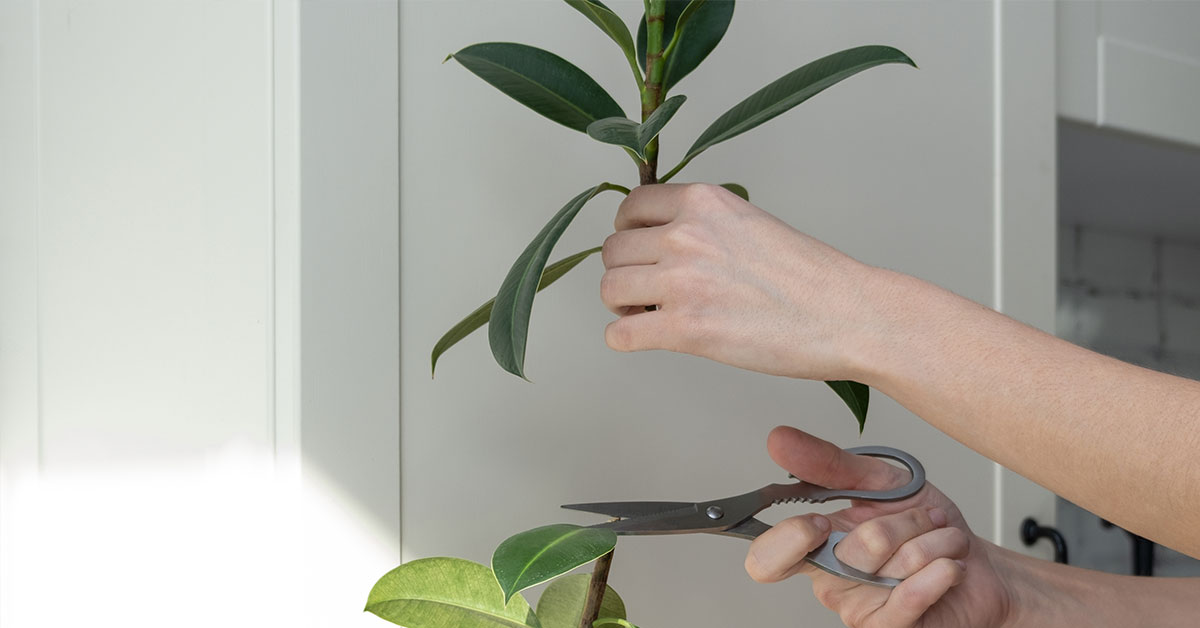Have you ever wanted to share your rubber plant with friends and family? Plant propagation is a great way to do just that. Propagating a rubber plant is a relatively straightforward process, and with a few simple steps, you can have multiple plants in no time. We’ll go over the basics of how to propagate a rubber plant and provide tips to help ensure success.
The Best Time For Propagating A Rubber Plant
The best time to propagate a rubber plant is in the spring or early summer. The warmer temperatures and increased hours of sunlight make it easier for a new plant to develop roots. Make sure to choose a healthy stem and place the cutting in a container with a soil mix that drains well. Keep the soil moist and provide bright, indirect light to encourage the cutting to take root. If done correctly, a new rubber plant should have established roots in a few weeks.
Rubber plants are a popular choice among houseplant enthusiasts and are known for their easy care and attractive foliage. Propagation of rubber plants is an easy and rewarding way to increase your plant collection. The process of propagating rubber plants is simple and requires few materials.
With just a little bit of care and attention, you can have a new rubber plant to enjoy in no time. The propagation of rubber plants is also a great way to share and spread your love of plants with others. Whether you are giving away cuttings or growing new plants from seed, propagating rubber plants is a great way to bring a little bit of the outdoors into your home. As well as a bit of joy to your friends and family.
How To Propagate A Rubber Plant From Cuttings
Propagating a rubber plant from cuttings is a simple and rewarding process that can save you money and increase your plant collection. First, choose a healthy stem from the rubber plant and take a 3 to 6-inch cutting. Make sure the cutting contains at least two leaves.
Dip the cut end of the stem into rooting hormone and then place it in a pot of moist potting soil. Cover the pot with a plastic bag to keep it moist and place it in a warm, indirect light. Keep the soil moist but not soggy and check for roots in a few weeks. Once roots have formed, remove the plastic bag and keep the soil lightly moist. After a few months, your rubber plant cutting should be ready to be transplanted into a larger pot.
Rubber plants can be propagated easily from cuttings. The best soil for propagating a rubber plant is a combination of potting soil and perlite. The potting soil should be well-aerated and loose to encourage root growth and drainage.
The perlite should provide a good amount of air pockets and aeration to the soil. This combination provides soil that is light, airy, and well-draining, which are ideal conditions for propagating a rubber plant from cuttings. Additionally, it is important to ensure the soil is slightly moist and does not become too dry.
Providing Aftercare
Aftercare for a freshly propagated rubber plant is essential for it to thrive and become a healthy, beautiful addition to any home. Provide the propagated cutting with enough light, but not direct sunlight, as this can cause sunburn. An east-facing window is ideal. Water the plant thoroughly, but don’t let the soil become soggy.
Allow the top two inches of soil to dry before watering again. The plant should be fertilized every two weeks during the growing season with a water-soluble, balanced fertilizer. The plant should also be pruned regularly to encourage growth and a healthy shape. Lastly, be sure to check for pests and treat them accordingly.
When propagating a rubber plant, it is important to pay attention to the watering schedule. Overwatering can be just as damaging as underwatering. Too much water can cause root rot, which can prevent the plant from taking up the water and nutrients it needs to thrive. On the other hand, underwatering can cause the leaves to become dry and brittle and can also lead to the plant’s death. As a general rule, it is best to allow the soil of the rubber plant to dry out completely between waterings. This will ensure that the plant has the right amount of moisture to remain healthy.
Pests And Diseases That Can Harm A Freshly Propagated Rubber Plant
Pests and diseases can cause significant damage to freshly propagated rubber plants. Common pests such as mealybugs, scales, and spider mites can weaken and stunt the growth of the plant. Disease caused by the fungus Phytophthora can also cause root rot and leaf spots. To protect the plant, it is important to regularly inspect it for any signs of pests and diseases and to treat it promptly with either organic or chemical methods. Additionally, providing the plant with adequate sunlight, air circulation, and water can help to prevent the spread of pests and diseases.
Pruning a freshly propagated rubber plant is an important part of its care. To begin, remove any dead or damaged leaves and stems. Next, using sharp pruning shears, cut off any leggy stems that are growing away from the center. Be sure to leave at least two leaves on each stem to ensure proper growth. Finally, shape the plant as desired by trimming away any extra growth. Pruning a freshly propagated rubber plant will help it to grow strong and healthy, and will also help to keep it looking neat and tidy.













